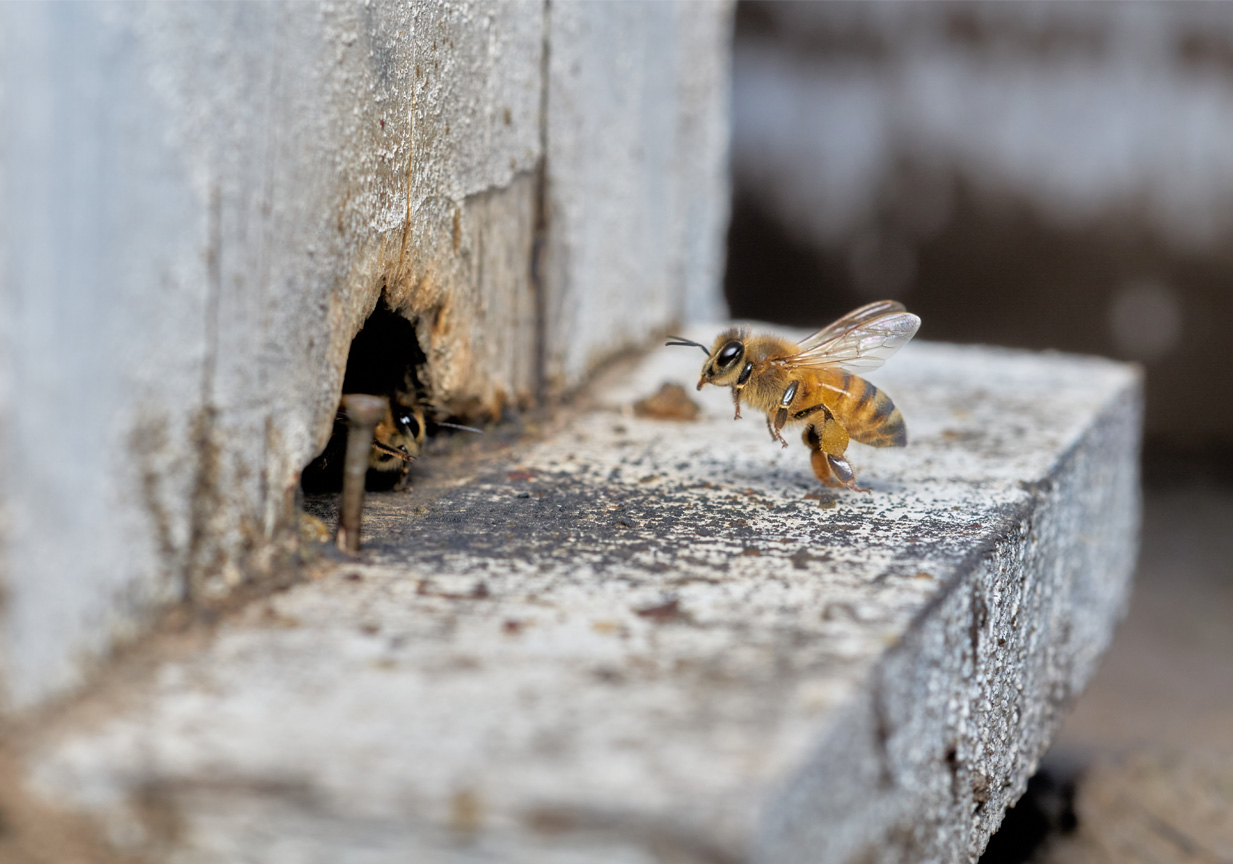 Véto-pharma
Véto-pharma With the Corona pandemic as a constant theme in our daily lives, media reports and scientific investigations for the last two years, social distancing has become an established practice in human societies globally. Although humans have always been exposed to pests and parasites that challenged them to identify efficient counter measures of protection, the Corona virus has reminded us of some of the most fundamental evolutionary strategies to achieve that goal. Social distancing has become a new norm in the face of the pandemic.
Meanwhile, honey bees have had to fight their very own global pandemic for much longer: The varroa mite (Varroa destructor) has first infested Western honey bee colonies several decades ago, in the mid-20th century.

The authors of a recent scientific publication decided to look more closely at possible strategies of honey bees to reduce the spread of varroa mites in colonies by implementing social distancing strategies. In their investigation, the researchers focused on spatial organization of the colonies (space use) and social interactions between individual bees. Varroa-infested and varroa-free (treated) colonies were placed in observation hives and observed on the colony level and as sources for laboratory experiments with a focus on individual worker bees.
The results of this study demonstrate a change of honey bee space use with regards to foraging dances in the hives. Bees from varroa-infested colonies moved foraging dances to the periphery of the hive towards lateral frames and closer towards the entrance compared with varroa-free colonies. This movement away from the central areas of the hive in infested colonies suggests a response strategy to minimize contact of possibly infested foraging bees with the vulnerable brood area of the colony. In addition, allogrooming behaviour, a social behaviour by which a bee removes foreign particles and parasites from another bee, occurred more frequently on central frames in and around the brood nest in infested colonies when compared to uninfested hives. This concentration of allogrooming behaviour in the core of infested colonies would be expected to keep the brood area clean and parasite-free.
These findings offer a new perspective on organizational immunity strategies in honey bee colonies. Social distancing is clearly one of the counter strategies utilized by these complex social insects to reduce infestation pressure. Perhaps, findings like this help offer a new perspective, not only on the complexity of honey bee colony organization, but also on the implementation of counter strategies against infectious diseases across species.
To read the full publication: Pusceddu, Michelina, et al. “Honey bees increase social distancing when facing the ectoparasite Varroa destructor.” Science advances 7.44 (2021): eabj1398.
VTP-79-EU-N01-01/22
Join the Véto-pharma community and receive our quarterly newsletter as well as our occasional beekeeping news. You can unsubscribe at any time if our content does not suit you, and your data will never be transferred to a third party!
© 2019-2025, Véto-pharma. All rights reserved